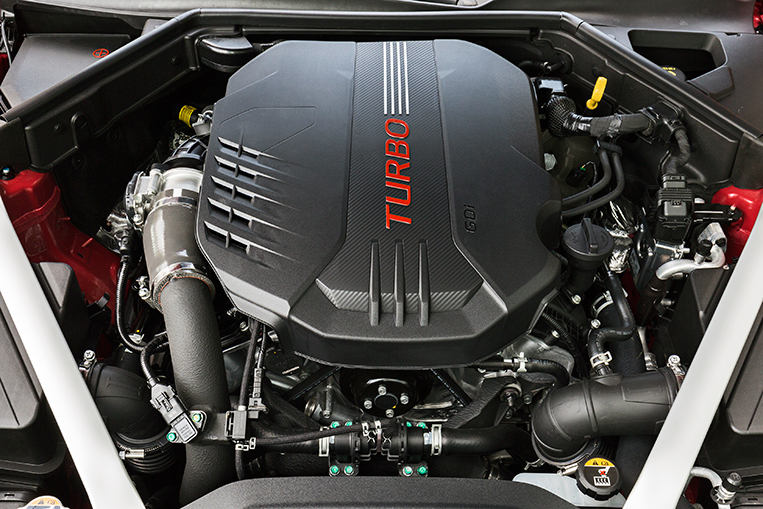
Performance is the reason the Kia Stinger GT makes more expensive German rivals cower in fear. Its 3.3-liter V6 engine can make the sprint to 100km/h in 4.7 seconds. Row through the eight-speed gearbox and the motor loudly screams through quad exhaust tips. But this marvel of clever engine design would not be possible without the presence of a very low-key speck on the periodic table of elements: sodium.
Before we go into that, let’s look at how a four-stroke internal-combustion engine works. The four, uh, strokes that complete one combustion cycle are intake, compression, combustion and exhaust. The intake valves let fresh air into the cylinder bore, while the exhaust valves expel the burnt byproduct of the compression and combustion strokes out of the engine through the tailpipe.

Now, these valves operate at massively different temperature ranges. The intake valves are normally kept cool thanks to the cold air rushing through them from the engine’s air intake. However, the exhaust valves are exposed to much higher temperatures due to the very hot gases passing by it during the exhaust stroke. For turbocharged engines, exhaust gas temperatures can go as high as 900°C.
If the exhaust valves are allowed to heat up excessively, the engine runs the risk of pre-ignition or detonation. Pre-ignition means that the air-fuel mixture inside the cylinder is ignited before the spark plug fires. Detonation, on the other hand, is the combustion of end gases left in the cylinder after the spark plug has fired due to intense heat and pressure. Scorching-hot exhaust valves increase the likelihood of either scenario taking place, which leads to a loss of engine power and reduced fuel efficiency.

This is where sodium comes in. Sodium is an alkali metal that is present in a lot of the things we use (from table salt to aircraft de-icing fluid). Apart from making our food taste better, sodium in liquid form is a pretty robust material. It has a melting point of 98°C and a boiling point of 883°C, which means that it can stay molten within a very wide range of high temperatures before it vaporizes. In addition, the thermal conductivity of sodium is very high since it’s a metal. This makes it a very effective medium for heat transfer.
Kia has intelligently harnessed the properties of sodium by hollowing out the exhaust valves of the Stinger GT’s engine and filling the cavity with sodium metal. When the engine is running, exhaust gases heat up the valves, which melt the sodium inside. Since sodium has very high thermal conductivity, the heat from the spent gases is essentially transferred to the molten goo within.

The constant up-and-down motion of the valves means that the liquefied sodium sloshes around from the valve head to the valve stem. And again, the ability to conduct heat works wonders here since the sodium transfers the heat from the valve stem to the valve guide in the cylinder head that has engine coolant passing through it. The valve temperature is effectively kept low relative to the fiery hot exhaust gas temperature. This decreases the risk of pre-ignition and detonation, which translates to better engine performance.
The Koreans certainly got their sums right. This twin-turbo masterpiece of automotive engineering makes 365hp of output and 510Nm of torque from as low as 1,300rpm. All the hard work that went into putting sodium to good use didn’t go unnoticed as this powerplant is one of “Wards 10 Best Engines” for 2018. Not bad for something that is usually sprinkled over bland French fries.











Comments